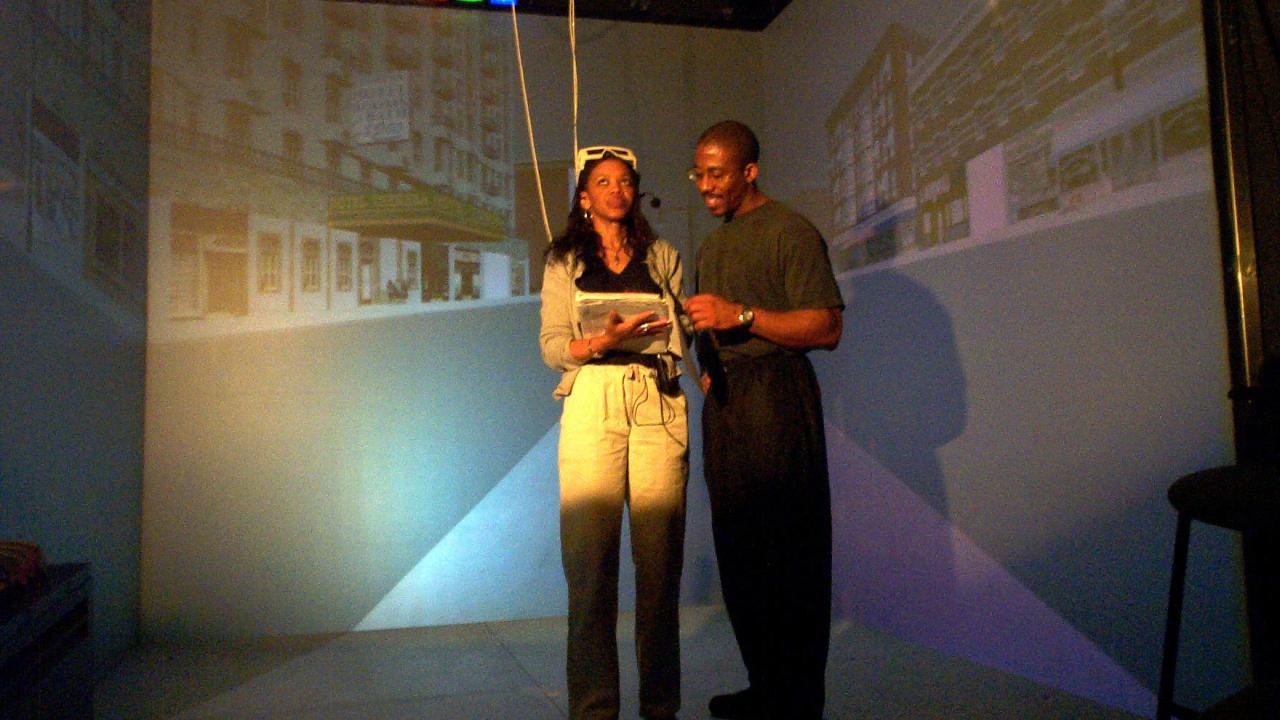|
|
||||||||||||||||||
Virtual Harlem
Researchers: Andrew Johnson, Brenda Lopez Silva, Dave Pape, Jason Leigh, Josephine Anstey, Steve Jones, Tim Portlock, Bryan Carter, Bill Plummer, Thaddeus Parkinson, Jim Sosnoski, Jennifer Brody, Jim Fletcher, Jim Hall, Richard Besel, Janice Lively, Ken McAllister, John Warnock, Ron Scott, Marvin Landis, Thomas Kinney
URL: http://www.evl.uic.edu/cavern/harlem EVL is working with Central Missouri State University, the University of Missouri and the University of Arizona on the Virtual Harlem project, a collaborative learning initiative whose purpose is to study the New York Harlem Renaissance through the construction of a collaborative virtual-reality scenario that represents Harlem as it existed in the 1920s and 30s. Advanced networking technologies will be applied to the Virtual Harlem project and its integration into African-American Studies classes at the University of Illinois at Chicago and partner institutions. The Virtual Harlem project has attracted considerable attention in African-American communities in New York, Chicago and other sites. Bryan Carter, the researcher who initiated the project as a complement to undergraduate courses in the Harlem Renaissance, was given an award by the MOBE (Marketing Opportunities for Black Entrepreneurs) group; Virtual Harlem was a special feature of their annual conference held in Chicago in 2000. EVL receives numerous requests for demonstrations of Virtual Harlem from local schools and community centers. More than half of the people building Virtual Harlem are African Americans, including programmers. The project has been embraced by the Head of the UIC African-American Studies Department, whose faculty members have served as instructors in Harlem Renaissance courses using Virtual Harlem. Indeed, several African-American high-school science students who were introduced to Virtual Harlem have worked at EVL to learn the programming skills required to build models. UIC artists, humanists and computer scientists are beginning to convert the Virtual Harlem project from a compelling demonstration to a dynamic visual history database for research. We are adding a set of analytical tools that parallel Geographical Information Systems (GIS) by visualizing the full history of the neighborhood, incorporating census data, real estate data, investment / reinvestment data, and crime and health data, in addition to the cultural information that helps to give the data meaning. The model for this project is work done at the Nathalie P. Voorhees Center, the Great Cities Institute and the Data Visualization Lab in the College of Urban Planning and Public Affairs at the University of Illinois at Chicago, and at the Center for New Media and the Computer Science Department at Columbia University in New York. Users will be able to retrieve and cache data from a variety of sources, incorporating it into the Virtual Harlem model, as it relates to courses on urban planning, policy, cultural or historical studies. The data resides in several places: the Schomburg Museum, the Harlem School of the Arts at Columbia University, the Harlem Chamber of Commerce, the Manhattan Chamber of Commerce, The New York Public Library System, the Paul Robeson collection at Rutgers, the James Van Der Zee collection at the Studio Museum of Harlem, Library of Congress, US Census data, The New York Times, and The Amsterdam News (a major African-American newspaper published in Harlem). Virtual Harlem will become a repository of data about urban development that will enable government planners as well as students to anticipate (and see) the impact of changes in urban neighborhood environments as never before. Email: ajohnson@uic.edu Date: August 1, 1999 - August 1, 2000 |